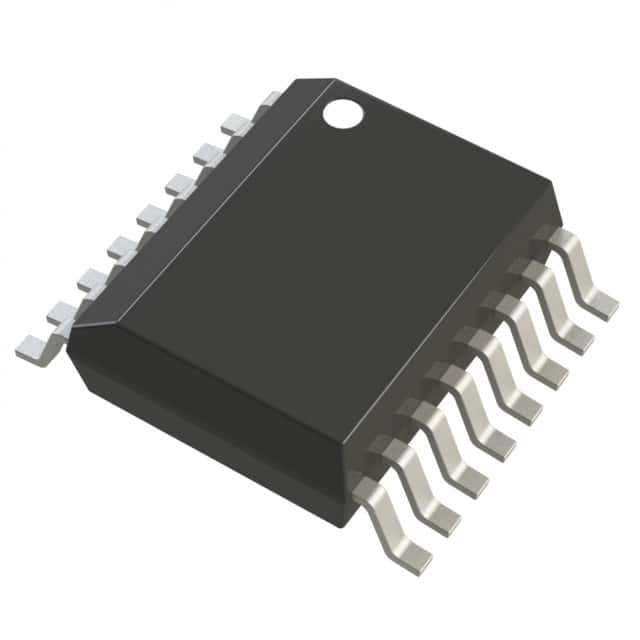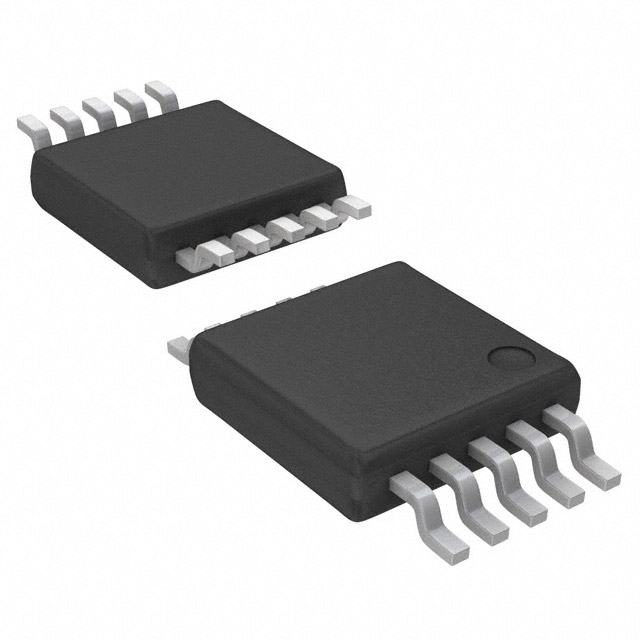Ⅰ. PMIC - Thermal Management
Ⅱ. Physical Characteristics of PMIC - Thermal Management
Ⅲ. Electrical Characteristics of PMIC - Thermal Management
Thermal management is a critical aspect of Power Management Integrated Circuits (PMICs) to ensure their reliable and efficient operation. PMICs handle power conversion, which results in heat generation. Effective thermal management is essential to prevent overheating, maintain safe operating temperatures, and ensure the longevity and performance of the PMIC. Here are some key aspects of PMIC thermal management:

1.Heat Dissipation: PMICs generate heat due to power dissipation during voltage regulation and switching operations. Efficient heat dissipation is crucial to prevent the temperature from rising excessively. The dissipation of heat can be facilitated through various means, such as proper PCB layout, thermal vias, copper planes, and the use of heat sinks or heat spreaders.
2.PCB Layout: The PCB layout plays a significant role in thermal management. It should be designed to allow efficient heat transfer from the PMIC to the surrounding environment. Proper placement of thermal vias, copper planes, and sufficient spacing between components can help dissipate heat effectively.
3.Package Selection: The choice of package type for the PMIC can impact thermal management. Packages with exposed thermal pads or thermal slugs offer better heat dissipation capabilities. The selection of a package that allows for effective heat transfer and thermal conductivity is important in managing the PMIC's temperature.
4.Thermal Resistance: PMICs have thermal resistance, which defines their ability to transfer heat from the IC to the ambient environment. Lower thermal resistance enables better heat dissipation. Manufacturers typically provide thermal resistance specifications that help in designing proper thermal solutions for the PMIC.
5.Thermal Protection: PMICs often incorporate thermal protection mechanisms to prevent overheating and damage. These protections include temperature sensors that monitor the PMIC's temperature and trigger thermal shutdown if it exceeds a specified threshold. Thermal protection ensures the safety and reliability of the PMIC and the overall system.
6.Thermal Analysis and Simulation: Thermal analysis and simulation tools can be used to evaluate the thermal behavior of the PMIC and optimize thermal management strategies. These tools can help identify potential hotspots, assess the effectiveness of heat dissipation techniques, and ensure the PMIC operates within the specified temperature limits.
7.External Cooling: In certain high-power or high-temperature applications, additional cooling mechanisms may be required. This can involve using external heat sinks, fans, or other active cooling methods to enhance heat dissipation and maintain the PMIC's temperature within acceptable limits.

Proper thermal management of PMICs is crucial to maintain their performance, reliability, and longevity. By implementing effective heat dissipation strategies, monitoring temperature levels, and utilizing thermal protection mechanisms, the PMIC can operate optimally within the specified temperature range. This ensures the overall stability and efficiency of the power management system in which the PMIC is employed.
Physical Characteristics of PMIC - Thermal Management
When it comes to the physical characteristics of Power Management Integrated Circuits (PMICs) related to thermal management, there are a few aspects to consider. While the thermal management of PMICs primarily relies on design considerations and external factors, the physical characteristics of the PMIC itself can impact its thermal behavior. Here are some relevant physical characteristics:
1.Package Type: The package type of the PMIC can influence its thermal management capabilities. Different package types have varying thermal properties and provide different levels of heat dissipation. For example, packages with exposed thermal pads or thermal slugs offer improved thermal conductivity and allow for better heat transfer to the surrounding environment.
2.Thermal Pad/Slug: Some PMICs come with a dedicated thermal pad or slug that enhances heat dissipation. These thermal pads or slugs are designed to maximize thermal conduction between the IC and the PCB, facilitating the transfer of heat away from the PMIC.
3.Thermal Resistance: PMICs have a thermal resistance specification that indicates how effectively heat can be transferred from the PMIC to the ambient environment. Lower thermal resistance values imply better heat dissipation capabilities and more efficient thermal management.
4.Die Attach Material: The material used for attaching the PMIC die to the package can impact thermal management. Materials with high thermal conductivity, such as silver-filled epoxy or solder, are commonly used for efficient heat transfer.
5.Internal Heat Dissipation Mechanisms: PMICs may incorporate internal heat dissipation mechanisms, such as heat spreaders or heat sinks, to improve thermal performance. These mechanisms help distribute and dissipate heat more effectively within the PMIC, reducing the temperature rise.
6.Exposed Paddle: Some PMIC packages have an exposed paddle on the underside of the IC. This exposed paddle can serve as a heat sink, providing additional surface area for heat dissipation and improving thermal management.
7.PCB Layout: Although not a direct physical characteristic of the PMIC itself, the PCB layout plays a crucial role in thermal management. An optimized PCB layout can enhance heat dissipation by ensuring proper placement of thermal vias, thermal planes, and copper traces to facilitate heat transfer away from the PMIC.
It is important to consider these physical characteristics and design considerations when selecting and implementing PMICs in electronic systems. Proper thermal management can help maintain the PMIC within its safe operating temperature range, prevent thermal stress, and ensure reliable and efficient operation.
Electrical Characteristics of PMIC - Thermal Management
When it comes to the electrical characteristics of Power Management Integrated Circuits (PMICs) related to thermal management, there are several factors to consider. These electrical characteristics influence the PMIC's thermal behavior and its ability to manage heat effectively. Here are some relevant electrical characteristics:
1.Power Dissipation: The power dissipation of a PMIC refers to the amount of power it consumes and converts into heat during operation. Higher power dissipation leads to increased heat generation. Understanding the power dissipation characteristics of the PMIC helps in determining the thermal management requirements and selecting appropriate cooling solutions.
2.Efficiency: The efficiency of a PMIC is a measure of how effectively it converts input power to output power without excessive power losses. Higher efficiency results in lower power dissipation and reduced heat generation. PMICs with higher efficiency help in minimizing thermal issues and improving overall system performance.
3.Thermal Shutdown Protection: PMICs often incorporate thermal shutdown protection mechanisms to prevent overheating and potential damage. These mechanisms monitor the temperature of the PMIC and initiate a shutdown if it exceeds a certain threshold. Thermal shutdown protection ensures the safety and reliability of the PMIC and the surrounding components.
4.Current Handling Capacity: PMICs are designed to handle specific current loads. The maximum current handling capacity of the PMIC is an important electrical characteristic. Operating the PMIC within its specified current limits ensures proper thermal management and prevents excessive heat generation due to overloading.
5.Voltage Regulation: PMICs are responsible for providing regulated output voltages to various components and subsystems within an electronic system. Voltage regulation accuracy is a key electrical characteristic that ensures stable and consistent power delivery. Well-regulated voltages help in minimizing power dissipation and optimizing thermal management.
6.Input Voltage Range: The input voltage range within which the PMIC can operate is an important electrical characteristic. Operating the PMIC within the specified input voltage range is crucial for its proper functioning and thermal management. Deviating from the recommended input voltage range can result in increased power dissipation and heat generation.
7.Switching Frequency: PMICs with switching regulators operate at a certain switching frequency. The switching frequency affects the efficiency and thermal behavior of the PMIC. Higher switching frequencies can result in increased power losses and heat generation, while lower frequencies may affect the size and cost of external components.
By considering factors such as power dissipation, efficiency, thermal protection, current handling capacity, voltage regulation, input voltage range, and switching frequency, designers can select and implement PMICs in a way that ensures optimal thermal performance, system reliability, and overall efficiency.



